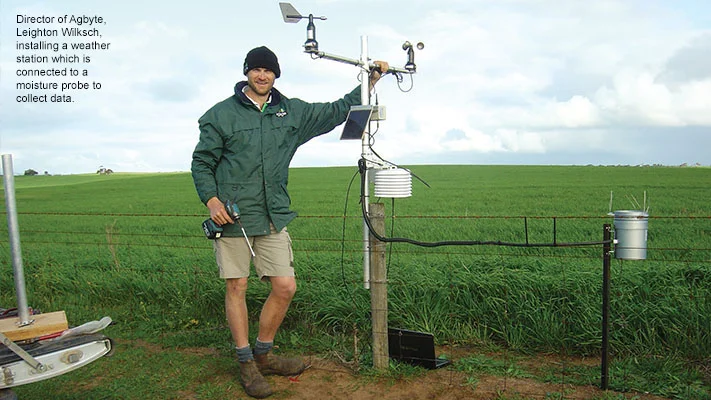
While drought proofing your farm is a near impossible task, researchers and agronomists say effective management and using precision farming technology can increase water efficiency and dramatically reduce the impact of drought in tough years.
Having just experienced one of the worst seasons of his career, agronomist working in southern New South Wales (NSW), Mitch Dwyer says recent conditions have further emphasised the need for moisture retention strategies and investment in precision farming technology.
“We’ve been pretty fortunate here in Cowra in the past, with good stubble and rainfall showing marginally better returns, but this year we were caught out,” Mitch said.
“This is why preventative management is so important. All of the information is there for us, it’s just about linking the research with what we’re doing practically on the farm.”
The Grains Research and Development Corporation (GRDC) recently released results from its research initiative to increase the water use efficiency (WUE) of grain-based farming systems by 10 per cent.
The research – which was conducted in partnership with the Commonwealth Scientific and Industrial Research Organisation (CSIRO) and a network of 16 regional grower groups – measured the factors that influence WUE and investigated what management practices would lead to an increase in WUE, with impressive results.
“Moisture retention is a big one when it comes to preparing for potential drought seasons,” Mitch said.
“Managing stubble loads, using moisture probes to understand the efficiency of the soil, and choosing the right grain varieties for your climate all have a major impact on the quality and quantity of your yield.”
Higher summer rainfall in recent years has presented a shift in weed type and a number of challenges for growers, particularly those in southern Australia.
Because of this, the research has shown that retaining water from summer showers by controlling weeds, can help farmers store an adequate amount of soil moisture leading into winter crop seeding.
“Fallow spraying is a great way of controlling weeds in the summer and making the most of late season rain,” Mitch said.
“The GRDC and CSIRO have demonstrated, in their recent research, that improved summer fallow management, including weed management and stubble retention can lead to a 60 per cent increase in grain yield.
“The results also show that a legume break crop, following two consecutive cereal crops, can lead to an increase of between 16 and 83 per cent.”
The use of variable rate technology is also recommended, as it allows farmers to gain a bigger picture understanding of how every acre of their property is functioning and responding to intervention, in good times, and bad.
“Soil sampling, using variable rate technology, is highly recommended for those who are looking to save money and time,” Mitch said.
“Taking a blanket approach to the management of soil nutrition can lead to unreliable results and less of a return from inputs.”
Mitch said he has recommended WEEDIt in the past, a spot spraying system that pinpoints plants, because it is very precise.
“This precision approach helps with resistance and reduces the overuse of sprays, which saves time, money and the environment.”
The results from the GRDC and CSIRO research also revealed that by matching nitrogen supply to the soil type it is possible to achieve a yield increase of up to 91 per cent.
“A lot of harvesters are collecting grid data using infrared imaging now, which is assisting farmers with soil sampling, and variable rate spreaders make it easy for farmers to adapt their fertilizer regimes to the needs of specific soil types,” Mitch said.
“When you start to put all of these things together you get a good understanding of your entire property, and the unique needs for each area.”
Mitch said that it’s promising to see so many farmers now embracing technologies that allow them to make calculated decisions about their farming approach through the collection of data.
“New technology in farming is a given, but it’s been great to see the next generation of farmers really embracing the products on offer to plan ahead for challenging years,” Mitch said.
“There was a disconnect for a while there, when agricultural technology companies were making great products but farmers just weren’t using them.
“Now we’re seeing an increase in adoption of precision agriculture as the farmers, who have grown up with digital technology, start to take over the management of their farms and this technology becomes more accessible.
“The latest research has proven that preventative management increases water use efficiency and we are fortunate to have the technology that allows us to do this. The positive impact of water retention should not be underestimated or forgotten.”
For more information about the management techniques and crop models used by the CSIRO in their researching water use efficiency for increased grain yield study go to csiro.au.